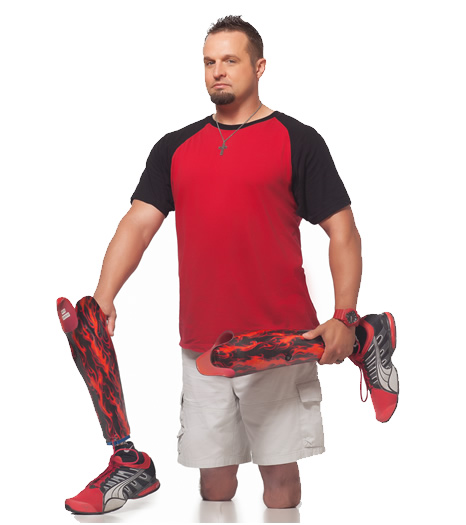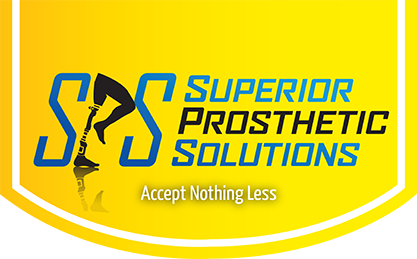Ertl Procedure

Over the past 20 years, prosthetic technology has come a long way. While no single solution completely restores function for all amputees, how the amputation is performed is the one variable that greatly impacts quality of life for everyone. The Ertl Procedure may not be an end-all, be-all answer, but we have seen remarkable results when working with clients who have elected to pursue this promising philosophy for their limb amputation or reconstruction.
The Ertl Bonebridge Philosophy
The Ertl Procedure is a combination of reconstructive surgical principles. The focus of the principles is rebalancing the five main structures of a limb (so they function much like they did prior to amputation). The goal is to recreate a pain free, stable volume limb that resists rotation, and has the potential for end weight bearing.
The principles and philosophy of the Ertl procedure can be incorporated at any level of limb amputation. They are not specific to transtibial amputation. Instead, these principles are more about reestablishing the natural relationships found within structures that make up any limb. For specifics of each structure, read below.
Structure Specifics
In a transtibial amputation, the initial focus is the creation of a synostosis (bonebridge) by way of a flexible bone graft between the distal the tibia and fibula. This allows for reestablishment of the medullary canal (internal bone) pressure and re-stabilization of the distal tibia and fibula, while producing a more volumetrically stabilized limb that can once again accept end weight bearing. The same principles are applied at the transfemoral level; however, only one bone is involved as the medullary canal is covered with the flexible bone graft.
Nerves are identified, placed on stretch, and transect as proximal as possible well out of the way of any traumatized tissue to eliminate neuroma formation with in any scared environment.
Arteries and veins are dissected and individually ligated from one another (to avoid formation of any AV malformations or painful fistulas, and not encourage vascular inefficiency).
Multiple myoplasty are performed in a pant-over-vest style to reestablish the length tension relationship of the flexors and extensors/abductors and adductors muscle groups. The myoplasty reestablishes functionality of the muscle pumping action of the heart so they can actively contract and assist returning blood to the heart and while actively pumping edema back to the lymph system. This is known as the peripheral heart effect.
Special attention is given to tailor craft a smooth skin closure over the underlying myoplasty keeping it free of dog ears, invaginated or adhered scars. The well contoured cylindrical limbs allow for a greatly improved capability for end weight bearing decreasing osteoporosis secondary to conventional distal offloading, less skin shear, and a remarkably stable design ideal for highly functional prosthetic outcomes. The results are outstanding.
Common Issues with Traditional Amputation
Amputations cause a host of issues for an amputee. Many of them are interrelated and complex. However, it is helpful to understand these common issues in order to appreciate the Ertl Bonebridge philosophy and approach.
This is the body’s way of telling you something is wrong. Residual limb pain is a symptom of an underlying problem from at least one of the five basic structures of a limb (bone, muscle, blood vessels, nerve or skin). Often, pain challenges a prosthetist to modify the prosthesis in order to reduce or mask an amputee’s pain, but for some amputees, further surgical intervention cannot be avoided.
Many amputees ultimately become inactive due to complications associated with the outcome of their amputation. Inactive Residual Extremity Syndrome (IRES) is the result of pain from nerve and bone endings, bone and soft tissue atrophy, muscle retraction, fibular instability, femur instability, and soft tissue scarring leading to inactive participation of the residual limb in ambulation.
The bone is a pressurized cylinder. Inside a long bone, the medullary canal, with an arterial pulse, connects to the heart. In normal anatomy, a profusion of blood flows laterally from bone to peripheral parts of the body, nourishing the surfaces of the skin. During traditional amputation, as a bone is cut through (transected), the natural, internal pressure is eliminated (as there is no focus placed on closing up then end of the bone to re-establish the microsystem of the pressurized medullary cavity).
Following the path of least resistance, blood leaks out of the end of the bone (sometimes for a very long time) and collects in the distal limb along with edema. In essence, blood is diverted to the end of the limb, ultimately compromising peripheral circulation, exacerbating painful postoperative edema, all while nourishing the formation of unwanted boney overgrowth (exostosis).
Bone makes up the skeleton, and it is the source of fixation for the muscles and movement. Bone is designed to withstand axial loading. Without perpetual stress, bone becomes weaker over time. This loss of integrity leads to osteoporotic bones.
Traditional amputation techniques leave the end of a bone open, so it’s typically painful to place axial pressure on the bottom of a limb (and almost impossible for most conventional recipients to bear their body weight directly on the end of their limb). In the case of the transtibial amputation, an additional source of pain can come from chop sticking that occurs between the residual tibia and fibula as the limb loses volume and funnels deeper into the socket.
Another challenge associated with conventional amputation is the loss of muscular function. There are many different muscle systems surrounding a limb, but when you think about the function of each of these balanced micro systems, it’s clear why so many people have trouble controlling their limb after amputation. Muscle works on a length-tension relationship between two attachment points. When one attachment point is removed, the balanced system is destroyed. In traditional amputation techniques, well over half of the distal muscle is trimmed away. Often the top (proximal) part of the muscle is allowed to retract without providing a new bottom (distal) fixation point. In most situations, a large posterior flap is used to cover the distal end of the amputated bone to give it some padding, but in general, this method gives very little respect to the muscles’ pre-surgical functionality, or post-surgical reestablishment of function. Thus, atrophy ensues. Nerves are rarely given much attention and are often tied off in a neuroma vascular bundle, or left to form a neuroma within the scarred posterior flap.

